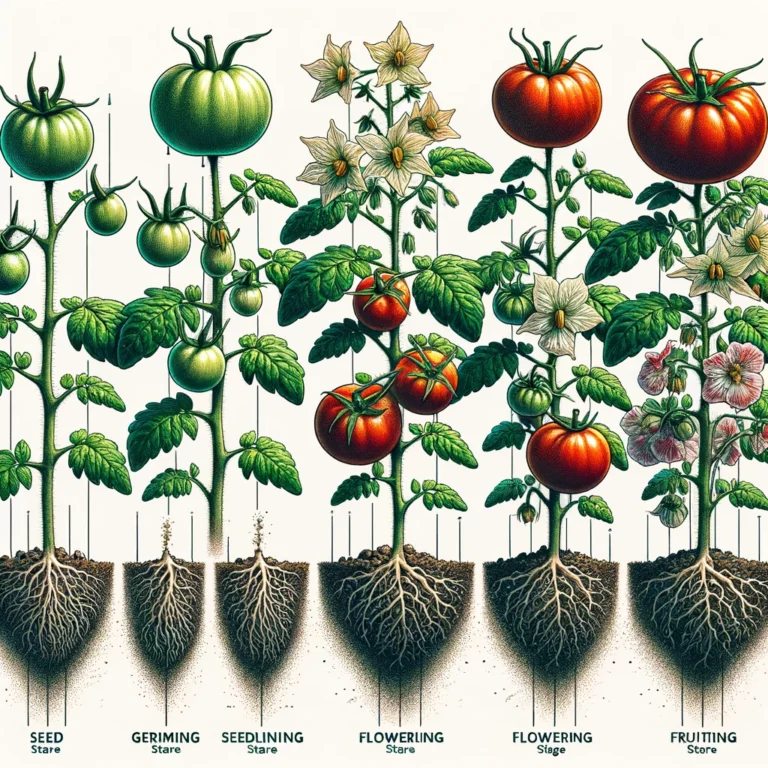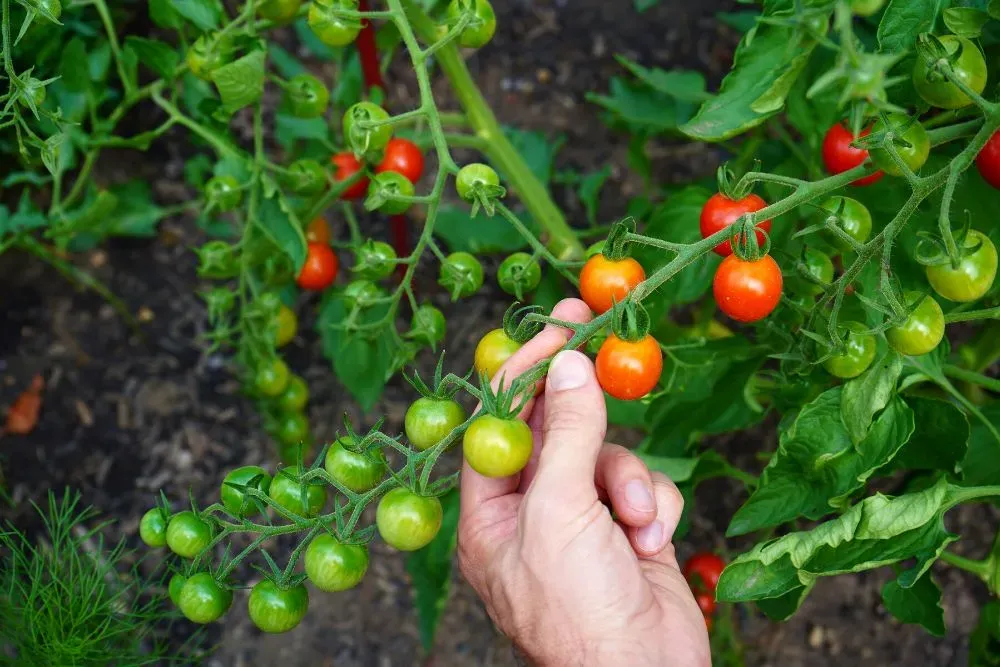In This Article
Introduction
When I plant a new species in my garden, it’s helpful to know what to expect. This is true whether I’m exploring a new variety of tomato or introducing a completely different crop. Understanding the various growth stages of a plant is always beneficial.
Although there are significant differences among tomato varieties, such as cherry, globe, beefsteak, etc., their primary growth stages remain quite similar. In this article, I’ll detail the growth stages of a tomato plant from seed to harvest.

Variety Variations
The exact appearance and size of your tomato plants will vary depending on the varieties you grow. However, all tomatoes progress through the same developmental stages.
It’s important to distinguish between determinate and indeterminate tomatoes. Indeterminate varieties grow continuously, producing fruit throughout the season. In contrast, determinate varieties grow to a specific size and stop growing after their initial fruiting period.
Stage 1: Tomato Seedling
Tomatoes begin as tiny seedlings, with seeds that germinate easily, often sprouting within 3-4 days of planting.
The first leaves, known as cotyledons, are long and thin and are not considered “true leaves.”

After several days, the seedlings start to develop true leaves, which look different from cotyledons and resemble the typical tomato leaf shape.
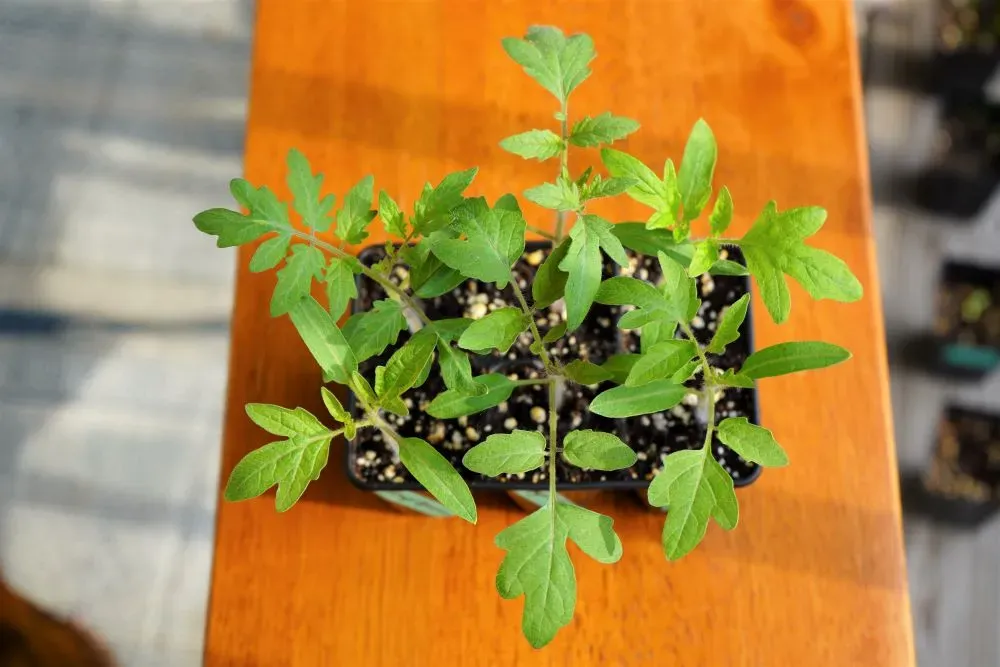
If you planted tomatoes last season, you might notice volunteer plants from the previous year’s tomatoes. These seedlings often emerge in early spring as the soil warms.
Tomato seedlings require nutrition to grow quickly. I recommend using a diluted liquid fertilizer or planting seeds in nutrient-rich potting soil.
Stage 2: Tomato Growth
Tomatoes grow rapidly. Once they are a few inches tall, they need to be moved to larger containers.

This growth stage involves developing a sturdy main stem, a deeper root system, and more leaves and branches. Adequate sunlight, water, and nitrogen are crucial for healthy growth. A larger leaf canopy will generate more energy for the plant’s next stages.
Ensure your plants are in appropriately sized containers during this stage. You’ll likely acclimate them to outdoor conditions before planting them in the ground or a large container.
Stage 3: Tomat Flowering
The timing of the flowering stage varies, but eventually, tomato plants will start to bloom. These yellow flowers appear along the main stem and sucker shoots.
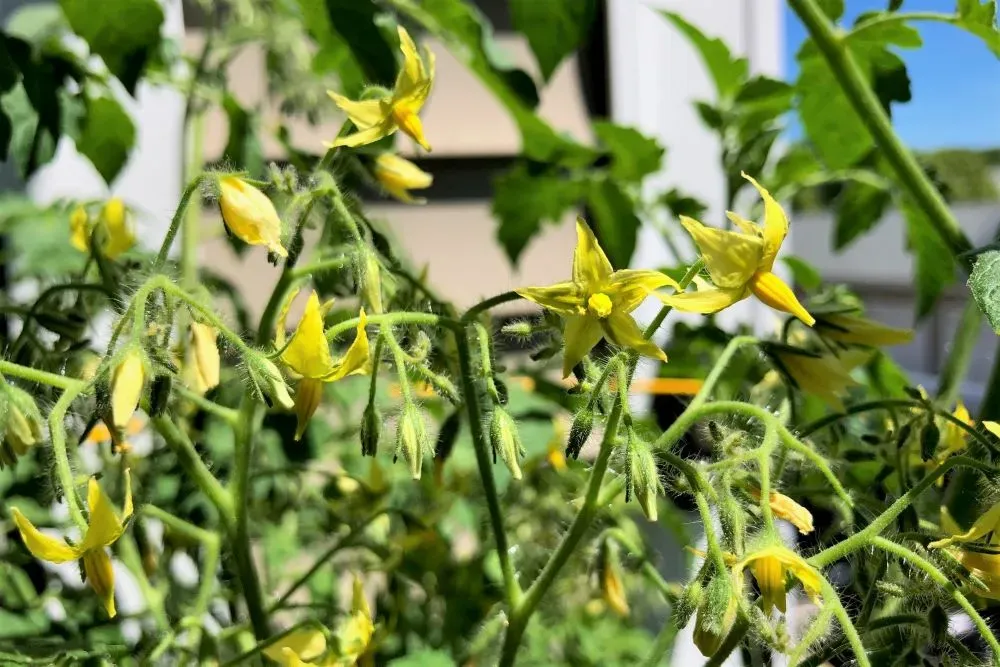
Pollinators like bees are attracted to these flowers, which is essential for fruit set.
Flowers typically appear on the lower part of the plant first and gradually work their way up. Be pleased when you see flowers; they’ll soon turn into tomatoes.
Pruning early tomato flowers is generally unnecessary, especially for indeterminate varieties, which continue to produce flowers.
Stage 4: Tomato Fruiting
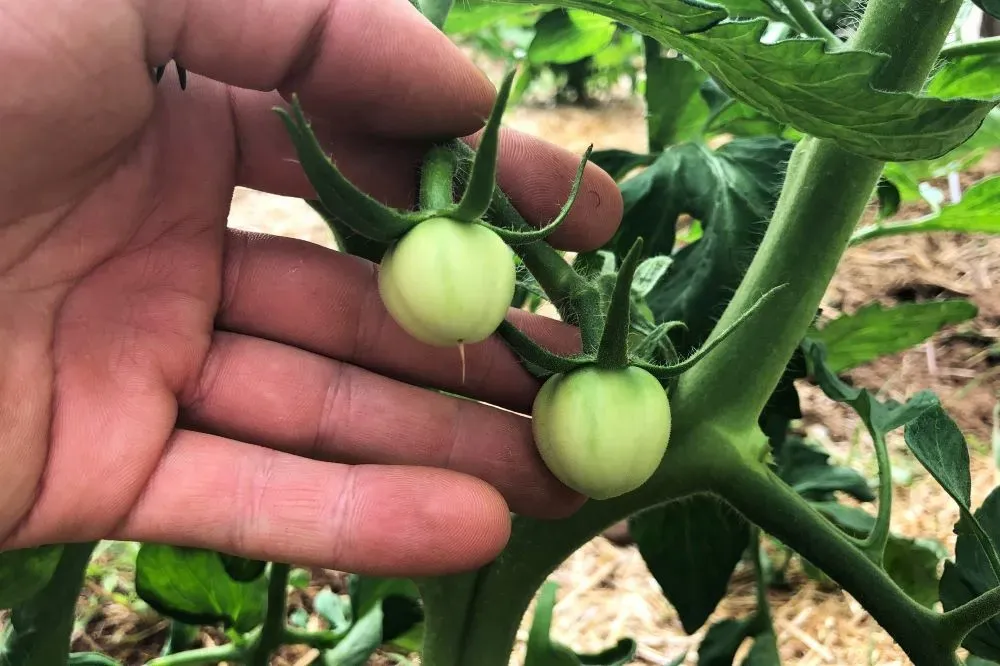
About a week after flowering, the petals will fall, and fruits will begin to form. It’s natural for some flowers to fall off without producing fruit.

Watch as the tomatoes grow from small berries to full-sized fruits. This process can take 3-4 weeks, depending on the variety.
To prevent sun scald, shade early tomatoes. Most plants will naturally protect their fruit with leaves. The West-facing side is often the most exposed to intense afternoon sun.
Tomatoes will grow to their full size but will stay green for several more weeks before ripening.
Avoid picking green tomatoes unless frost is imminent. Unripe tomatoes are hard and not very tasty.
Stage 5: Tomato Ripening (and Re-flowering)
As your tomatoes ripen, they will change color from green, usually to red, yellow, or orange.
I recommend waiting until the fruits are at least 50% colored before picking for the best flavor. Tomatoes will continue ripening after being picked. However, the most flavorful tomatoes are fully ripened, right off the vine.
It is important to water your tomatoes evenly now. Avoid drought during ripening, and try picking tomatoes before heavy rain or watering. Uneven watering can make nearly-ripe tomatoes split open or get blossom end rot!
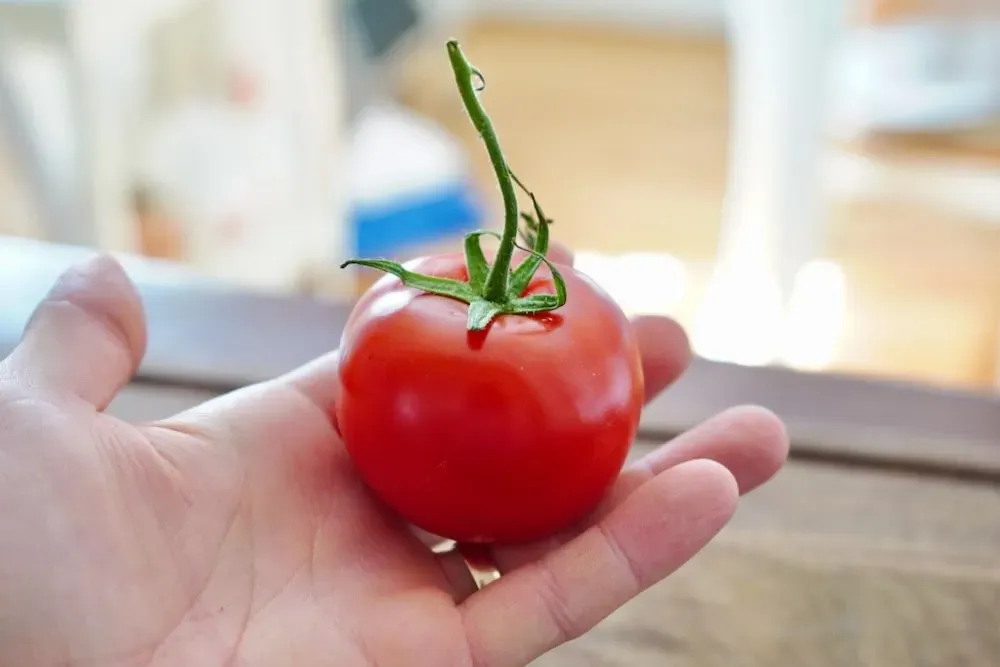
If you are growing indeterminate tomato plants, they will continue producing flowers, fruits, and ripe tomatoes all at once.
I love growing these tomato types since you can harvest tomatoes continually until the first fall frost.
Once cold weather begins, tomato plants slow their growth rate.
Eventually, frost will kill the tomato plants since they are not frost-tolerant.
If you don’t mind a messy garden, leave some ripe tomatoes on the soil – their seeds may sprout next spring and give you new tomato plants.
However, I’d only suggest doing this with heirloom varieties, not hybrids.
20 Interesting Fun Facts About Tomato Plant Growth Stages:
Here are 20 interesting fun facts about tomato plant growth stages for tomato lovers:
- Tomato plants go through several distinct Tomato Plant Growth Stages as they mature, starting as a seed and ending with a ripe, red tomato ready for eating!
- The first Tomato Plant Growth Stage is germination when the seed sprouts and pushes through the soil. This takes 6-12 days after planting.
- The second stage is seedling growth where the baby tomato plant gets its first set of true leaves after the initial seed leaves. This takes 1-2 weeks after germination.
- Tomato seedlings then enter the transplantation stage where they’re moved from indoors or seed trays into the garden. This is a critical Tomato Plant Growth Stage.
- Once transplanted, the tomato plant enters the vine growth stage where it rapidly grows in height and begins flowering. This takes 2-4 weeks.
- Flowering leads to the fruit set stage where the pollinated flowers develop into tiny green tomatoes. This takes 1-2 weeks after flowering.
- Green tomato growth is the next Tomato Plant Growth Stage where cell division causes the tomatoes to rapidly expand in size.
- After 4-6 weeks of growing, tomatoes reach the mature green stage where growth stops but they remain hard and green.
- The breaker stage is next, lasting 1-2 weeks, where tomatoes begin softening and show the first hints of color change.
- Tomatoes then reach the turning stage where they rapidly change from green to red, yellow, orange, pink, or purple.
- In the ripe stage, tomatoes are fully colored, juicy, and ready for picking directly from the Tomato Plant Growth Stages! This is the final and tastiest stage.
- The typical Tomato Plant Growth Stages from seed to ripe fruit is anywhere from 100-200 days depending on variety.
- Temperature, sunlight levels, and pruning practices impact how quickly a tomato plant moves through the Tomato Plant Growth Stages.
- Tomatoes picked early in the Tomato Plant Growth Stages will continue ripening off the vine but won’t have as much flavor.
- Ripe tomatoes left on the plant can become overripe and split open as cell walls weaken during the final Tomato Plant Growth Stage.
- Heirloom tomatoes typically have more complex Tomato Plant Stages and flavor development compared to hybrids.
- Smaller cherry and grape tomato varieties go through the same Tomato Plant Growth Stages but in a shorter time frame.
- Proper watering and fertilization ensures a tomato plant thrives through each Tomato Plant Growth Stage.
- Diseases like blossom end rot are common Tomato Plant Growth Stage issues caused by irregular watering during fruit growth.
- No matter the variety, watching a tomato plant slowly form fruits through its Tomato Plant Growth Stages is one of gardening’s greatest joys!

